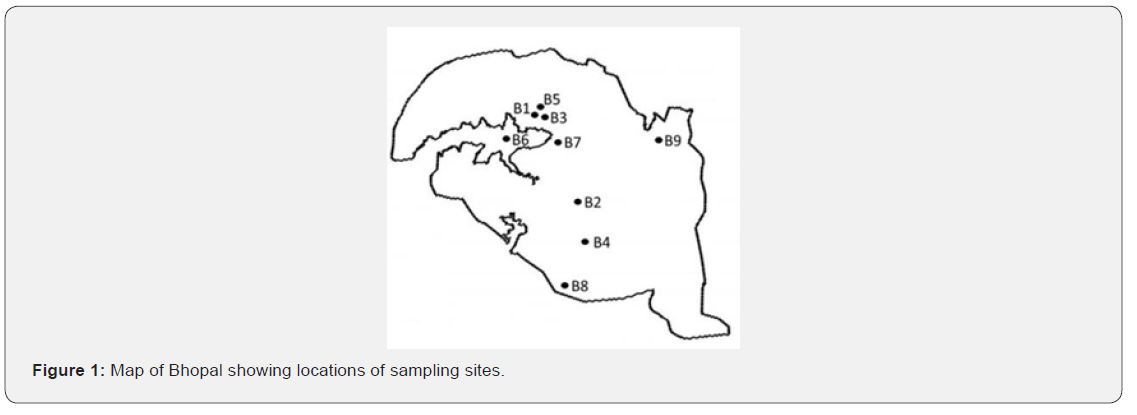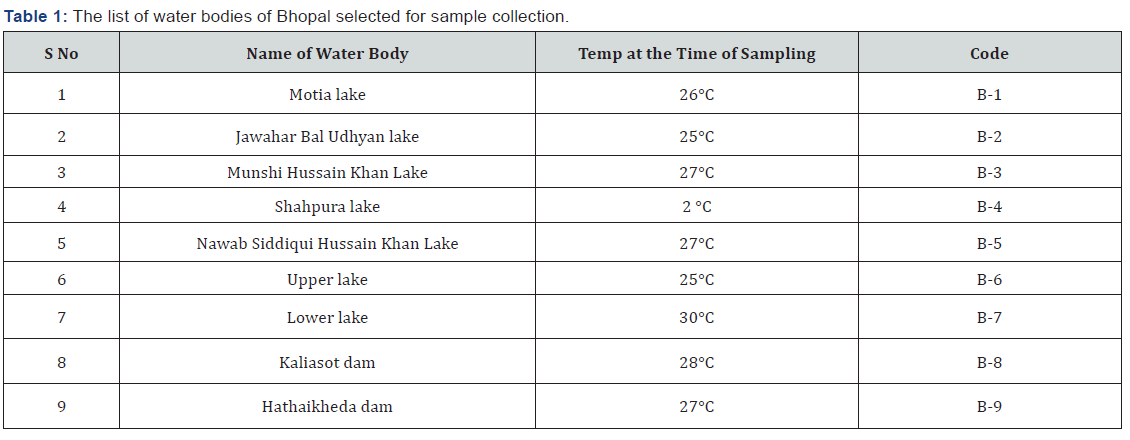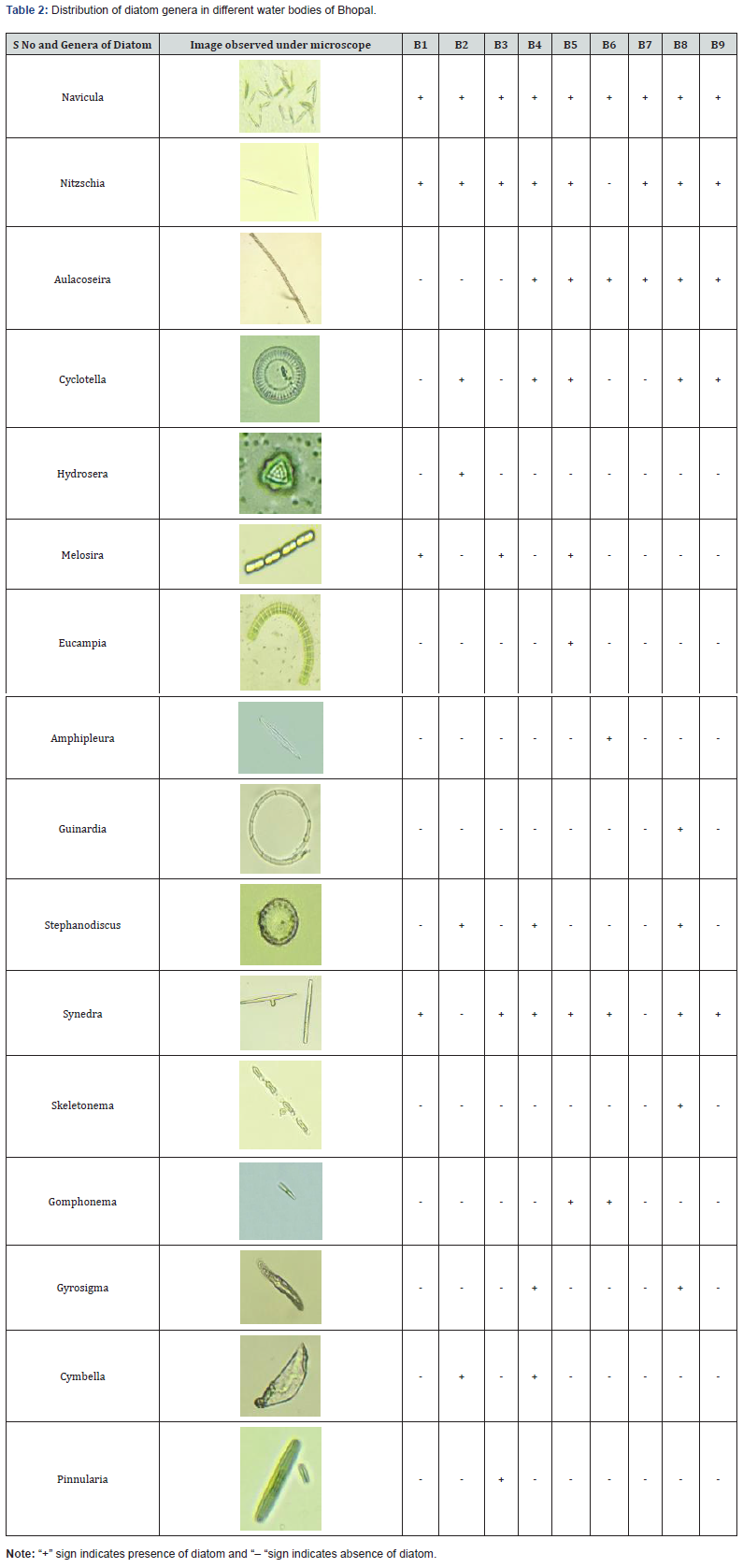Forensic Sciences & Criminal Investigation - Juniper Publishers
Abstract
In forensic science the analysis of diatom flora has been substantially used by forensic laboratories for the identification of ante-mortem or post-mortem drowning. The biological samples of drowning victim are analyzed for the presence of diatoms and are compared with the samples collected from the suspected site of drowning. The diatoms present in different water bodies vary greatly, which ultimately helps to generate diatom logical data and identification of the site of drowning. Diatoms are unicellular colonial algae which belongs to class- Bacillariophycea and phylum- Bacillariophyta. The exceptional feature of diatom which makes them identifiable, is the unique siliceous skeleton known as frustule. In this study, an attempt is made to generate data of diatoms of different water bodies of Bhopal. The purpose of the study is to help the forensic experts in the identification of drowning site in drowning related cases of Bhopal.
Keywords: Acid digestion; Ante-mortem; Diatoms; Drowning; Unicellular algae
Introduction
Diatoms are unicellular colonial algae which belongs to class- Bacillariophyceae/ Diatomophyceae and phylum- Bacillariophyta. The exceptional feature of diatom which makes them identifiable, is the unique cell wall structure which is composed of hydrated silica (SiO2.nH2O). This siliceous skeleton of diatom is known as frustule. The frustule is bipartite, i.e., constituted by two valves fitting together to enclose the cytoplasm. Out of the two valves, the larger valve is called Epivalve and the smaller one is called Hypovalve. Both valves hold together by girdle bands. The identification of diatoms is based on the structure of their valves showing different symmetry between the species and genera. They show bilateral or radial symmetry. The diatoms are taxonomically classified into two groups, Centric with circular; radial symmetry and pennate with elongated; bilateral symmetry. Size, shape, and patterns of frustules are the basis of diatom classification. In pennate diatoms the two valves are separated by a small space called Raphe. The raphe is mainly associate with the movement of diatoms (secrete mucilage to attach or glide along a substrate) [1-5]. The presence of photosynthetic elements (plastids) in their cytoplasm enables them to appear slightly yellow colored. The single diatom cells are generally invisible to the naked eyes but may appear as tiny spots of brown color. Most of the diatom species vary from 10-200 µm in size. In forensic science the analysis of diatom flora has been substantially used by forensic laboratories for the identification of ante-mortem or post-mortem drowning. In ante-mortem drowning the struggle for breathing cause entry of diatoms along with water into the lungs. They enter the blood stream, penetrate, and get deposited in lung, liver, kidney, stomach, brain, and bone marrow. The siliceous cell wall (frustule) is fossilized in fresh and marine water even after death of diatoms that enables them to be recovered from putrefied tissues. The biological samples of drowning victim are analyzed for the presence of diatoms and are compared with the samples collected from the suspected site of drowning [6-9]. The diatoms present in different water bodies vary greatly, which ultimately helps to generate diatom logical data and identification of the site of drowning. The identification of 20 diatoms/ 100 µl pellet (from 10 g lung sample) indicates the drowning. However, identification of 5 diatoms/100 µl pellet (from 10 g tissue sample of kidney, liver, brain, and bone marrow) indicates water inhalation (Ludes et al., 1999) [10].
Materials And Methodology
Sample collection
Nine (09) water bodies of Bhopal are selected for the collection of water samples. The sampling is done in the month of March 2021 and temperature of the water is noted for each of the water body. The samples are collected in 1 liter screw capped plastic containers/bottles, pre-washed with distilled water, dried and then sterilized. Before collection of samples the plastic containers are again rinsed with the same water medium to be collected. 1litre of water sample is randomly collected from each water body for the study of diatom flora and the water container is labeled with time, date, and location of that water body. After collection of samples, 1-2 drops of lugol’s Iodine solution is added (for preservation).
Diatom extraction
For extraction of diatoms following techniques are frequently used:
a) Acid digestion by conc. HCl and KMnO4
b) Acid digestion by conc. HNO3/H2SO4
c) H2O2 method
d) Incineration method
In this study for the extraction of diatoms from the collected water samples, Acid digestion method (with conc. HNO3) is used. In this method the collected water sample is treated with conc. HNO3 in the ratio of 10:1 respectively. 5 ml of water sample from the sample container (after shaking it properly for 1-2 mins) is taken in a small beaker and then 0.5 ml of conc. HNO3 is added to it. The concentrated acid digests the organic matters present in the water and left only the siliceous skeleton of diatoms. The beaker is then covered with aluminum foil and then kept overnight to allow the digestion. Next day the contents of the beaker are transferred in centrifuge tube and the centrifugation is performed at 5,000 rpm for about 10 minutes. The supernatant is discarded to get the pellet [11]. The above steps are repeated 2-3 times by adding distilled water to the pellet to remove the remaining acid contents. The above procedure is repeated for other collected water samples to examine the diatoms morphologically under microscope (Figure 1).

Microscopic Examination
After final centrifugation, the pellet is diluted with 1 ml distilled water. The above solution is poured over 2 microscopic slides, covered with cover slip, and left it to air dry. The microscopic slides prepared above are then observed under Compound microscope at 10X and 40X magnifications. The diatoms were identified based on their morphological characteristics (Table 1).

Diatom Identification
After the extraction of diatoms by acid digestion method and their microscopic examination, the diatoms were identified based on their morphological characteristics such as shape, symmetry, raphe and striae. The identification is done at genus level by using two sources:
a. Diatoms of North America project (this project is a collaborative effort to document the diversity of diatom species in North America).
b. A methods manual for the collection, preparation, and analysis of diatoms samples v1.0.
Result
As the water samples for diatom analysis were collected within the month of March with average temperature 26°C. For the growth of diatoms this temperature conditions were not suitable. Hence, a smaller number of diatoms are identified in the collected water samples. The commonly detected genera of diatoms in the water bodies of Bhopal are Synedra, Nitzschia, Navicula, Cyclotella and Aulacoseira. The diatom distribution shows a distinctive variation among the selected water bodies. The most commonly occurring diatom genera in most of the water bodies of Bhopal are Nitzschia and Navicula but in varying quantity. The details of the distribution of diatoms in different water bodies of Bhopal are shown in (Table 2).

Discussion
For the preparation of diatom logical data many attempts have been made in various regions of India i.e., Haryana, Punjab, Delhi, Mumbai, Jaipur, Aurangabad, Mizoram, and Indore. There is lack of any diatom logical data for Bhopal region. The diatom genera identified in the water bodies of Bhopal includes Cyclotella, Synedra, Navicula, Cymbella, Nitzschia, Aulacoseira, Gyrosigma, Gomphonema, Hydrosera, Melosira, Eucampia, Guinardia, Stephanodiscus, Skeletonema, Pinnularia Anomoeoneis and Amphipleura. In most of the water bodies Navicula, Nitzschia, Cyclotella and Synedra are commonly occurring genera of diatoms. However, some of the diatom genera are specifically found in a particular water body. Hyderosera in Jawahar baal udhyaan lake, Eucampia in Nawab Siddhique hassan khan lake, Guinardia and Skeletonema in Kaliasot dam, Pinnularia in Munshi Hassan Khan Lake and Amphipleura in Upper Lake are the specifically identified genera that could help to pinpoint the drowning site in the investigation of drowning cases of Bhopal region. This study is limited as it has not recorded seasonal variation in distribution of diatoms; the results can be authenticated by further update through regular monitoring of diatom logical data in selected water bodies of Bhopal.
Conclusion
In this study an attempt is made to prepare diatom logical database of diatoms of Bhopal region. This diatom logical data provides qualitative distribution of diatoms in the different water bodies of this region. From the study it is concluded that the specificity of diatoms in particular water bodies plays a vital role during the investigation of drowning cases. The diatoms found in the biological samples of drowning victim can be matched directly with the diatom data obtained from the study. Thus, could help in solving the drowning cases in less time.
To Know more about Forensic Sciences & Criminal Investigation
Click here: https://juniperpublishers.com/index.php





No comments:
Post a Comment